Prescription drug addiction can rob you of your health, your dignity, and your hope for a better tomorrow. At Blue Ridge Mountain Recovery Center, you will reconnect with your best self, and begin to build the foundation for a more promising future.
What is Prescription Drug Abuse
Learn More About Prescription Abuse
Many people believe that if a drug is legally prescribed by a physician they can’t become addicted to it. However, prescription drug abuse is one of the fastest growing addictions today. Prescription drug use disorder is defined as the use of one or more prescription medications for uses not intended by the prescribing physician. Often this is due to the pleasurable feelings or sensations created by the drug. Some people develop this problem following prescription of a medication for pain or psychological reasons, such as to decrease anxiety, then becoming addicted and continuing to take the medication when no longer necessary. Others develop an addiction to a prescription medication by taking medications found in their medicine cabinet at home or taking medications belonging to a friend.
Once an addiction is developed, the problem is compounded by the need to create a plausible story to obtain a long term prescription or a first time prescription in the case of medications taken from others. Many people end up “doctor shopping” or having more than one physician write the same prescription for them. However, as most prescription drugs that are abused are carefully monitored by pharmacists through computer systems which link the records at different pharmacies, people who try to fill multiple prescriptions are caught and lose access to the drug. This can lead to serious withdrawal symptoms which may lead to illegal drug use due to the inability to tolerate the distressing symptoms.
Statistics
Statistics on Prescription Drug Abuse
The prevalence rate for prescription drug abuse in adults in the U.S. are estimated to be over 2.7%. The most commonly abused prescription drugs are pain medications, tranquilizers, stimulants and sedatives. In high school seniors, prescription drugs are the most commonly abused type of drugs. Over 8% of this age group reported taking Vicodin while over 5% reported using Oxycodone for non-medical purposes. These rates are considered under-estimates however, as many individuals with this problem don’t seek treatment. In general, most individuals who present for treatment are those who are suddenly cut off from the drug to which they are addicted.
Causes
Causes of Prescription Drug Abuse & Addiction
Determining what disorders are likely to co-occur with prescription drug abuse can be difficult due to cases where they are used to self-medicate a condition that is not truly co-occurring. Though, there is support for some disorders found to co-occur with this condition, including:
- Depression
- Anxiety
- Somatization Disorders
- Poly Substance Abuse (use of drugs from at least three different classes)
- Illegal Drug Use Disorders
- Attention Deficit Hyperactivity Disorder (child and adult onset)
- Conduct Disorder
Co-Occurring Disorders
Co-Occurring Disorders and the Complexity of Prescription Drug Addiction
Since the number of prescription drugs used for non-medical purposes is large, determining specific causes for the entire group is not possible. However, there are some general causes of the problem which have been shown to lead to the development of this disorder.
- Genetic – While not necessarily specific to the same prescription drug, it has been found that those with a first degree relative that has any substance abuse disorder is at greater risk for developing a prescription drug use disorder in the same category. It has been hypothesized this is related to temperament which is believed to be inborn. Some examples of this include:
-
- Activity Level – Those who are born with a preference for a high activity level prefer medications that increase energy and alertness such as amphetamines or other stimulants.
- Preference for Novelty – Those who enjoy experiencing new things are more likely to try a prescription medication found in the home or the home or a friend than others.
- Quality of Mood or Irritability – Those with certain mood states who discover either due to legitimate treatment with a prescription medication or by trying one obtained in another way that the medication improves their mood or decreases irritability are more likely to develop this condition than others.
- Attention Span, Persistence and Distractibility – Those born with a tendency to have difficulties in these areas are more likely to misuse amphetamines and other stimulants which are used to legitimately treat these conditions but which are addictive over time.
- Intensity of Reaction – Individuals who have temperaments leading to them feeling keyed up much of the time are more likely to misuse sedatives or other types of tranquilizers than others.
- Brain Related Effects – In general, all substance abuse disorders develop as a result of the drug’s effect on the reward systems of the brain. When various substances which mimic the effects of natural substances in our brains are misused, the brain responds to them the same as it does to the naturally produced version. Thus, substances that act similarly to drugs that cause a pleasurable response come to take the place of the substances we produce. This makes withdrawal harder since we no longer are creating the natural version of the substance and it takes a period of time before we are capable of doing so.
- Other Causes – There are other Factors that may lead to the development of prescription drug abuse. These include:
-
- The desire to get high and feel a better than normal mood state
- To relieve anxiety or physical body tension
- To decrease appetite
- To increase alertness
- Experimenting with various prescription medications to determine their effects
- To maintain the effects of a related drug or prevent withdrawal symptoms
- To feel more self-confident in social situations
- To be accepted by a desired peer group
- To be able to better concentrate and improve academic or occupational performance and productivity for reward
Signs & Symptoms
Signs and Symptoms of Prescription Drug Abuse
The symptoms of prescription drug abuse differ according to what drug or drugs are being used. However, there are certain symptoms common to all abused substances which include:
- Stealing medications or falsifying prescriptions
- Selling medications prescribed to the individual in order to obtain the money to buy the prescription of choice
- Taking higher doses than the physician prescribed
- Extreme mood swings, unusual positive mood or euphoria, irritability, hostility, aggression or anger outbursts
- Increased or decreased need for sleep
- Poor judgment and decision making abilities which is a change from previous levels of functioning
- Appearing to exhibit altered mental status, appearing “high”, unusually energetic or fatigued
- Continually “losing” prescriptions or reporting them “stolen” to obtain additional prescriptions
- “Doctor Shopping” or seeking prescriptions from more than one doctor
- Crushing pills to provide a faster “high” by snorting them
- Stealing or borrowing prescription medications from others
- Inconsistent answers to questions posed by physicians and family members about prescription usage
Effects
Effects of Prescription Drug Addiction
The effects of prescription drug abuse will also depend on the type of medication used. Some common categories of effects include:
- Masking, numbing or hiding both positive and negative emotions – This results in a secondary effect when the individual stops using the medication of being flooded with emotions the person is not used to dealing with creating distress which often leads back to re-starting the medication.
- Problems with interpersonal relationships
- Employment difficulties, decreased productivity and motivation, job loss
- Decreased academic performance
- Serious financial troubles
- Legal Issues
- Psychological Problems
- Poor judgment leading to high risk behaviors
- Transitioning from using prescription drugs to illegal drugs
- Engaging in criminal activities
- Increased motor vehicle accidents
Withdrawal
Withdrawal Symptoms of Prescription Drug Addiction
Physical withdrawal symptoms differ significantly by type of medication used, how easy it is to become addicted to it, dosage taken, length of time taken, and the degree to which tolerance has developed. Psychological withdrawal symptoms tend to overlap more than the physical symptoms as they have largely to do with a belief that the individual can’t function in various areas of life without the substance. Psychological withdrawal symptoms include:
- Decrease in self-esteem and self-confidence
- Fear of failure in work or academics due to lack of the substance
- The belief that without the substance they won’t be able to interact socially
- Fear related to adjusting to the world as it is and not as the person has experienced it while using a substance
If not addressed properly these withdrawal symptoms can negatively impact the individual’s life as much as the addiction.



